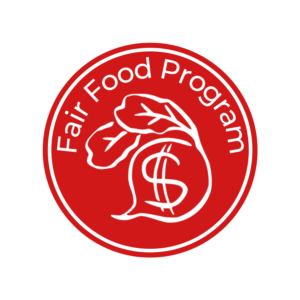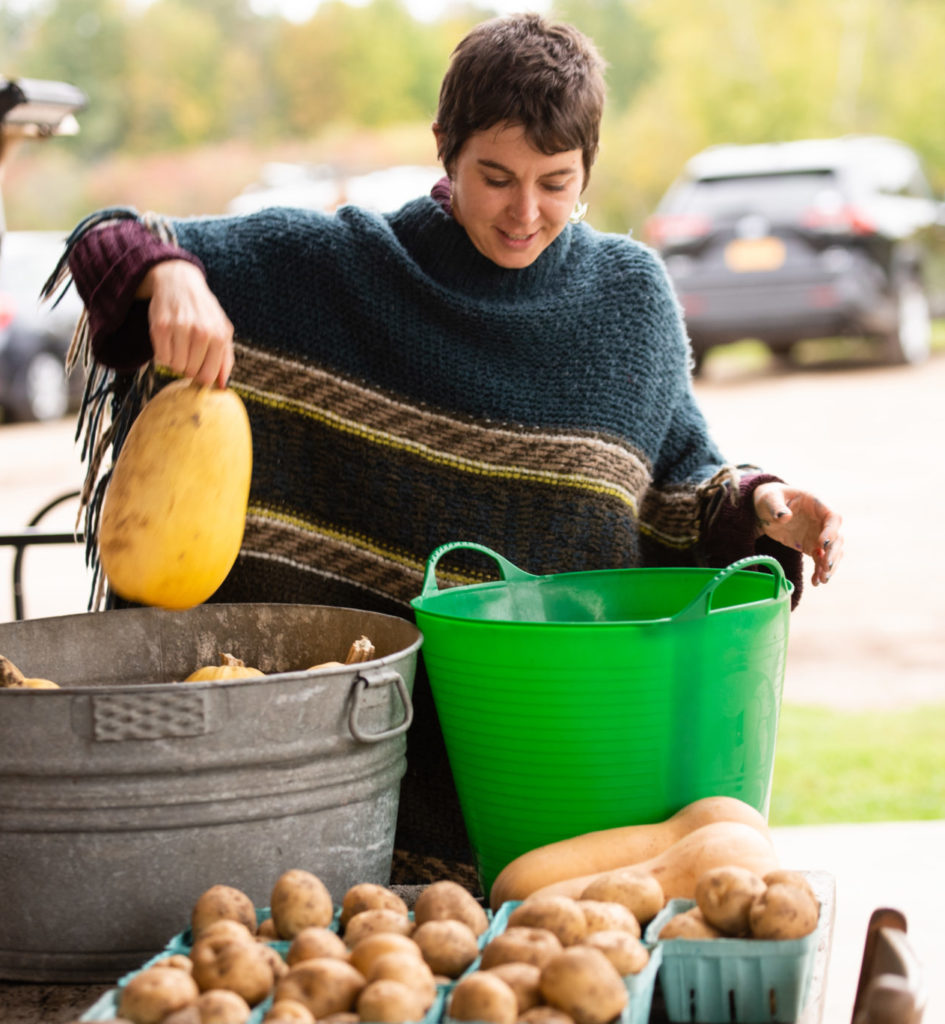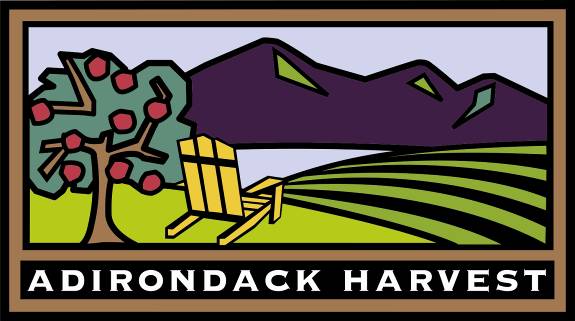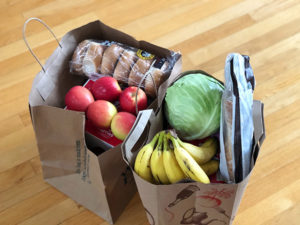Would you like to get more of your groceries from local farms but can’t afford to? You may qualify for AdkAction’s new Fair Food Program, which provides funding via our pre-paid Fair Food Cards to purchase local, farm fresh foods.


Would you like to get more of your groceries from local farms but can’t afford to? You may qualify for AdkAction’s new Fair Food Program, which provides funding via our pre-paid Fair Food Cards to purchase local, farm fresh foods.

Fair Food is a food subsidy program that helps local people access locally sourced, farm fresh foods. We work with farmers and food processors who not only grow or produce food locally, but who also value humane care of livestock and sustainable agriculture. Eligible households are low- and middle-income families in Clinton, Franklin, Essex, and Hamilton Counties.
Participants receive a Fair Food Card, which is a credit card that has been pre-loaded with funds based on household size. Fair Food Cards can only be used to purchase locally-sourced foods from approved farm vendors. The cards are topped up monthly with funds from generous foundation supporters and individual community donors.
Fair Food Cards are accepted at the following approved farms, farmers markets, food hubs, farm stores, and retailers throughout the Adirondacks. Check back regularly as our list is quickly growing.
Reber Rock Farm, Essex, NY (online ordering with on-farm pickup and delivery. Farm store open 7 days a week, 365 days a year).
The Hub on the Hill, Essex, NY (storefront and online ordering with regional delivery). Learn more about shopping at the Hub here.
Brandy Brook Maple Farm, Ellenburg Center. Visit them weekly at the Saranac Lake Farmers Market
Early Dawn Confections, Saranac Lake. Visit them weekly at the Saranac Lake Farmers Market
Harmony Hills Farmstead, Malone. Visit them weekly at the Saranac Lake Farmers Market
Juniper Hill Farm, Wadhams. Visit them weekly at the Lake Placid, Saranac Lake, Elizabethtown, and Keene Valley farmers markets
North Country Creamery, Keeseville. Visit their Farm Store located at 931 Mace Chasm Road in Keeseville, or visit them weekly at the Saranac Lake Farmers Market
Polish Corner, Plattsburgh. Visit them weekly at the Saranac Lake Farmers Market
Sugar House Creamery, Upper Jay. Visit their Farm Store located at 18 Sugar House Way in Upper Jay, or visit them weekly at the Saranac Lake and Keene Farmers Markets.
Triple Green Jade Farm, Willsboro. Visit them weekly at the Saranac Lake Farmers Market
Wild Work Farm, Keene Valley. Visit them weekly at the Keene Farmers Market
Essex Farm, Essex. Visit their farm store located at 2503 NY Route 22 | Essex, NY 12936
Mace Chasm Farm, Keeseville, NY. Visit their farm store daily from 9am-7pm at 810 Mace Chasm Rd in Keeseville or weekly at the Saranac Lake and Keene Valley Farmers Markets.
Craigardan Farm Store, Elizabethtown. Visit their farm store Monday – Saturday 9am – 6pm. Located at 9216 NYS RT 9N Elizabethtown, NY 12932.
The Cook Farm, Owls Head, NY. Visit their farmstand year round or pre-order for pickup at the Saranac Lake farmers market. Visit their online store here.
<< Click here for a complete list of area farmers markets and where Fair Food Cards are accepted. >




If you have any questions about the Fair Food Program, contact us and we’ll help you apply.
You must be a permanent resident of Clinton, Franklin, Essex, or Hamilton county to participate, and meet the household income requirements outlined below.
AdkAction uses United Way’s ALICE (Asset Limited, Income Constrained, Employed) income thresholds as a guide for eligibility. ALICE households earn more than the Federal Poverty Level, but less than they need to afford a basic survival budget. You can use the Income Eligibility Calculator below to see if your household may qualify before beginning the application.
If you are experiencing food insecurity and have an immediate need for assistance, please contact your county’s Department of Social Services office.
Essex County
Franklin County
Clinton County
Hamilton County
For more information about our Fair Food Program, please email [email protected]
The Hub on the Hill, in Essex, New York, accepts Fair Food Cards online for delivery. Visit their site to order locally produced food, delivered to your door weekly. The contents of Fresh Farm Packages vary from week to week based on what is in season.
AdkAction’s Fair Share program matches qualified residents of the Adirondacks with local farms that offer CSA (Community Supported Agriculture) shares. From roughly June-October, participants will receive a box each week from their respective farm that contains a mix of five to seven different vegetables. The box will change throughout the season, based on what is ready for harvesting. The model is focused on supporting farmers throughout the region with the high costs of planting and buying into the risk of any crop loss that happens (for example, due to drought) that they typically incur at the start of the season. In exchange, CSA members receive a generous weekly portion of all the food grown on the farm.
Our Fair Share Program is unique in that it allows individuals and families in our area to participate in a local food program that might not otherwise be accessible because of the large up-front costs that typically come with joining a farm’s CSA share. Because of our generous funders, we are able to offer these shares for free to participants and pay the farmers full price so they are supported at the start of their busy growing season.
For the 2022 season we are partnering with Tangleroot Farm (Essex), North Point Community Farm (Plattsburgh), and Juniper Hill Farm (Wadhams) to make these CSA shares available for individuals throughout the region for free. These CSA shares are limited and on a first come, first served basis. Learn more about the Fair Share program here.
 Use Adirondack Harvest’s map tool to find local food and products throughout the region, and to identify locations that accept different food assistance programs including Fair Food Pricing, SNAP, Double Up Food Bucks, Farmers Market Nutrition Program, Fresh Connect, and e-WIC.
Use Adirondack Harvest’s map tool to find local food and products throughout the region, and to identify locations that accept different food assistance programs including Fair Food Pricing, SNAP, Double Up Food Bucks, Farmers Market Nutrition Program, Fresh Connect, and e-WIC.
SNAP recipients are eligible to sign up for another program called “Double Up Food Bucks” to get additional funds to bring home more produce at participating farm vendors and at farmers markets. The program matches the value of SNAP spent on locally grown fruits and vegetables, up to $20 per day. For example, if you spend $10 from your SNAP EBT Card at a participating farmers market or mobile market, Double Up Food Bucks gives you another $10 to buy fresh fruits and veggies grown in New York State.
If you are eligible, we can help you sign up for Double Up Food Bucks during Fair Food Pricing enrollment.
 Supplemental Nutrition Assistance Program (SNAP) is a federal program, formerly known as “food stamps” that helps millions of low-income Americans put food on the table every year. SNAP provides families with their basic nutritional needs to get them through temporary hard times.
Supplemental Nutrition Assistance Program (SNAP) is a federal program, formerly known as “food stamps” that helps millions of low-income Americans put food on the table every year. SNAP provides families with their basic nutritional needs to get them through temporary hard times.
To get SNAP benefits, you must apply in the state in which you currently live and you must meet certain requirements, including resource and income limits. You can check eligibility and apply at ny.gov – it takes about 60 minutes to complete the application.
Once you qualify for SNAP you will receive an EBT card. The EBT card looks like a debit card, and can be used to pay for groceries at participating stores, including the Hub on the Hill and the Keeseville Farmacy.
The Adirondack Food System Network has put together a map of vendors who accept SNAP and WIC in the region.
All vendors in the nine-county region who accept the Supplemental Nutrition Assistance Program (SNAP) and/or Special Supplemental Nutrition Program for Women, Infants and Children (WIC) are designated by a dot on the map.
AdkAction launched a limited recipe series for our Farmacy project to share recipes and tips to enjoy eating locally produced ingredients all winter long. Click each collection’s title below to open a PDF, or pick up your free recipe booklet at the Keeseville Pharmacy.
Local Winter Recipes: Thanksgiving Edition
Local Winter Recipes: Breads & Dips
Local Winter Recipes: Quick & Easy
Local Winter Recipes: Meal Prep & Meals That Serve Many
Local Winter Recipes: Soups, Stews, Broths & Chili
Local Winter Recipes: Cozy Breakfasts
AdkAction has launched a limited recipe series for CSA shares and Fair Share participants to share creative recipes based on the foods grown in the Adirondacks during harvest season. Click each collection’s title below to open a PDF, or pick up your free recipe booklet at the Keeseville Community Garden and other AdkAction events.

